Abstract
1. The effects of denervation on the response of the cat soleus muscle to immobilization at different lengths by plaster casts has been investigated for a period of 4 weeks.
2. The passive length—tension properties of the denervated immobilized muscles were not significantly different from those of non-denervated muscles. Muscles immobilized in the shortened position showed a marked decrease in extensibility whether they were denervated or not. In all the other cases the length—tension curves were not significantly differetn from those of normal muscles.
3. The denervated soleus muscle immobilized in the lengthened position was found to produce 25% more sarcomeres in series, whilst those immobilized in the shortened position lost 35%. This adaptation was essentially the same as in muscles that had been immobilized but not denervated.
4. Denervation was found to have no effect on the recovery of muscles that had been subjected to 4 weeks immobilization in the shortened position. In these muscles the sarcomere increased back to the normal level within 4 weeks after removal of the plaster cast.
5. The adjustment of sarcomere number to the functional length of the muscles does not therefore seem to be directly under neuronal control. It appears to be a myogenic response to the amount of passive tension the muscle is subjected to.
Full text
PDF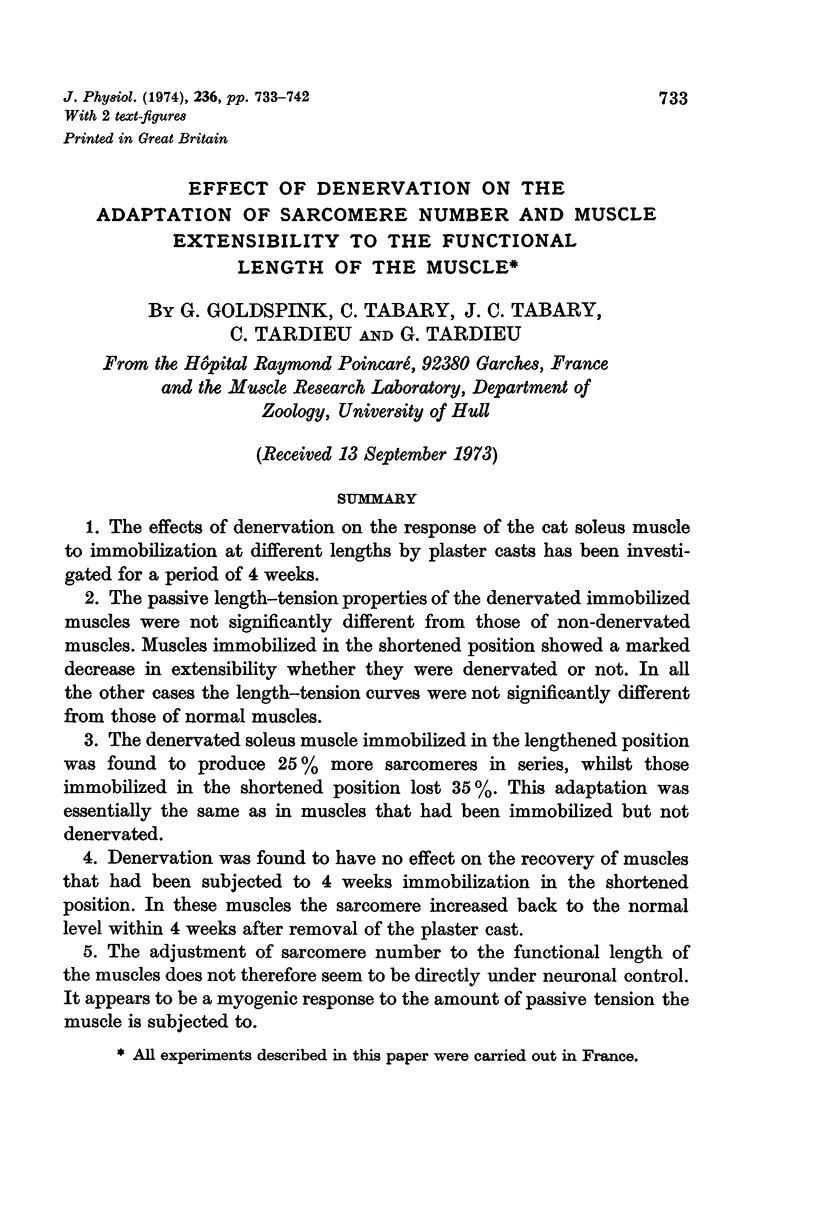
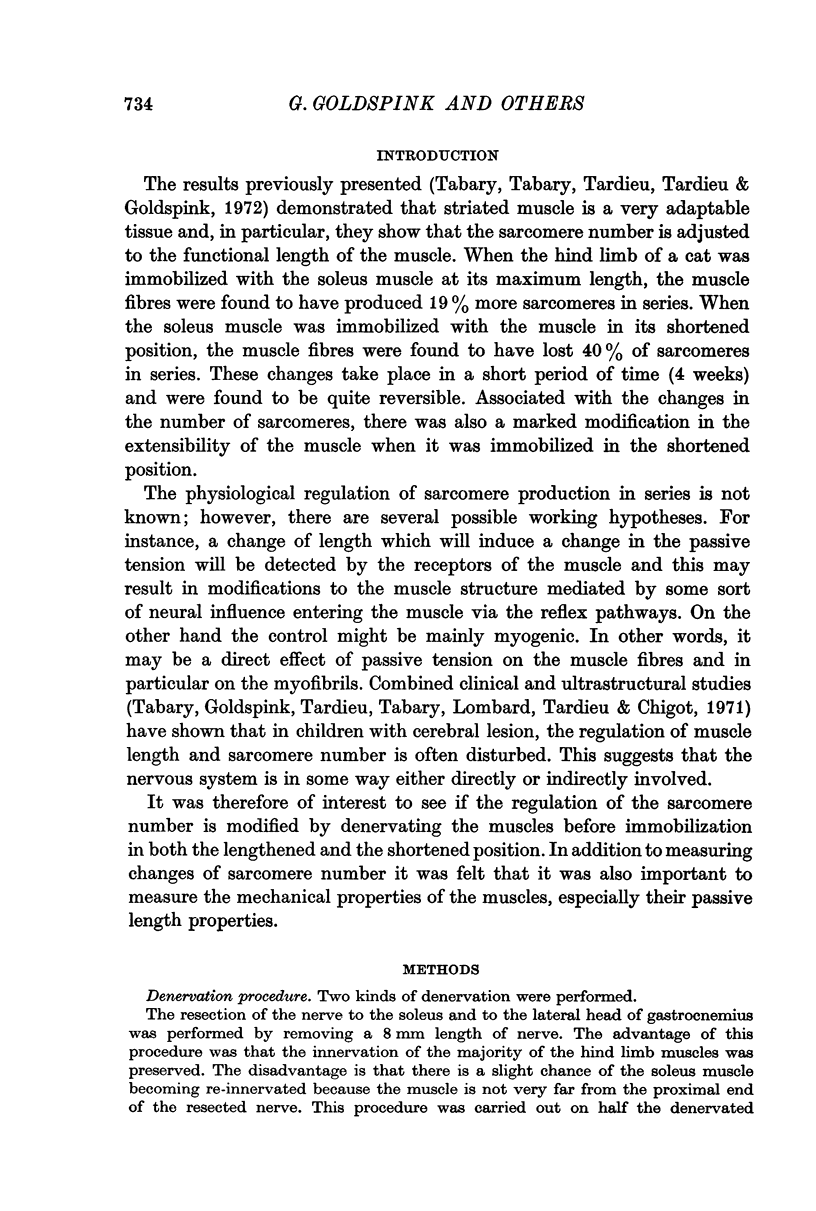
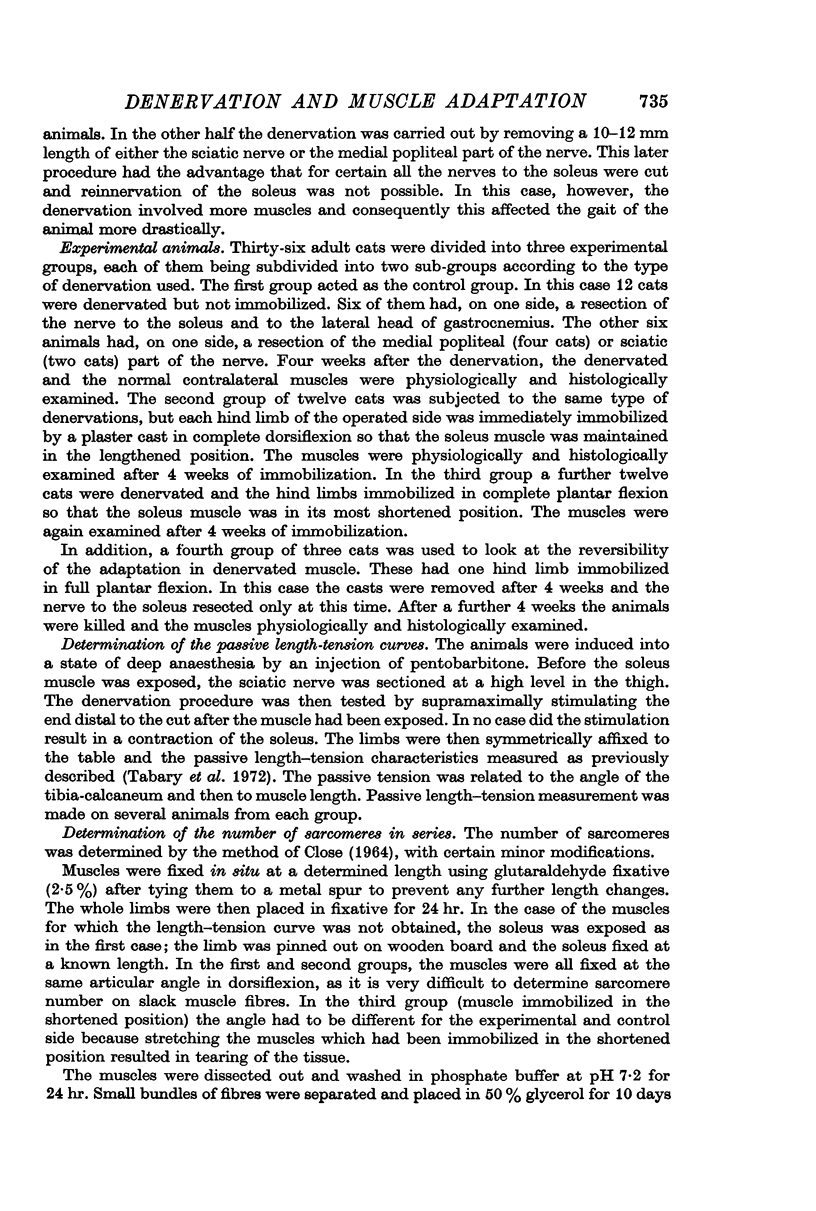
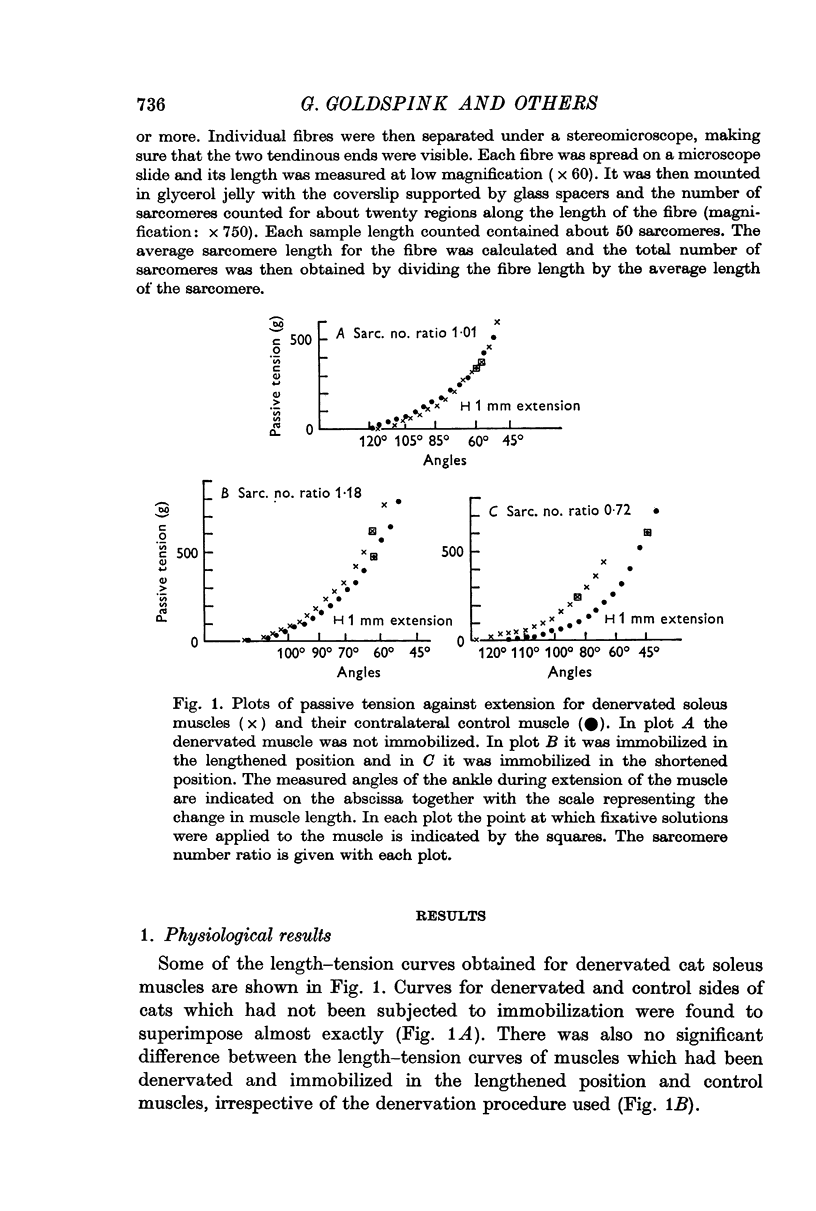
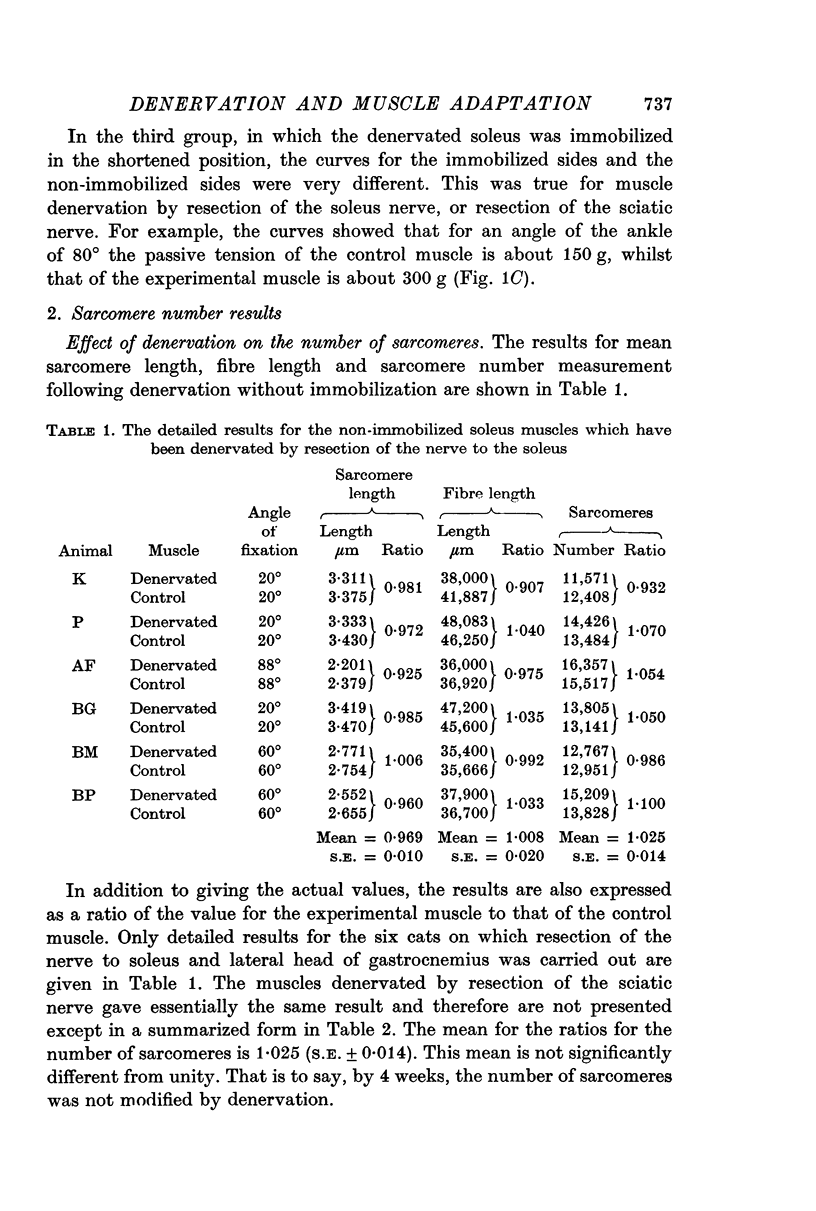
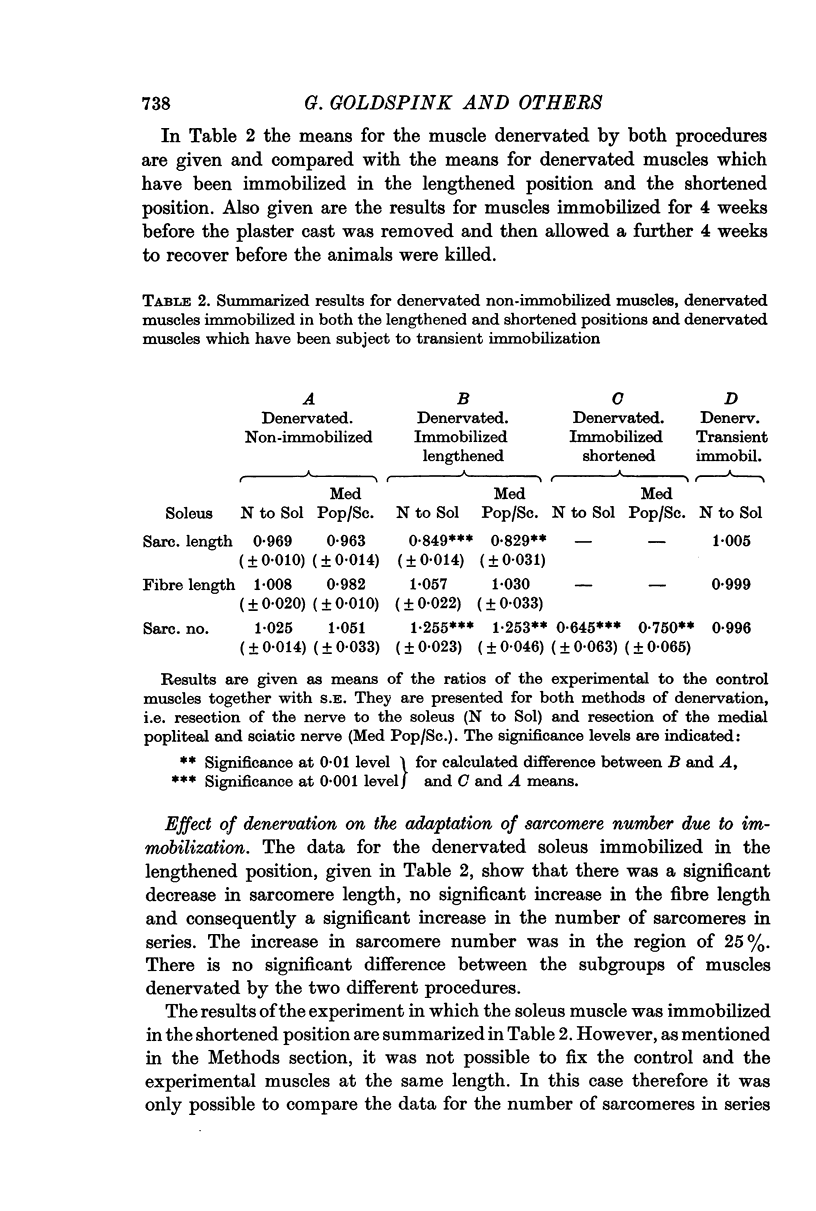
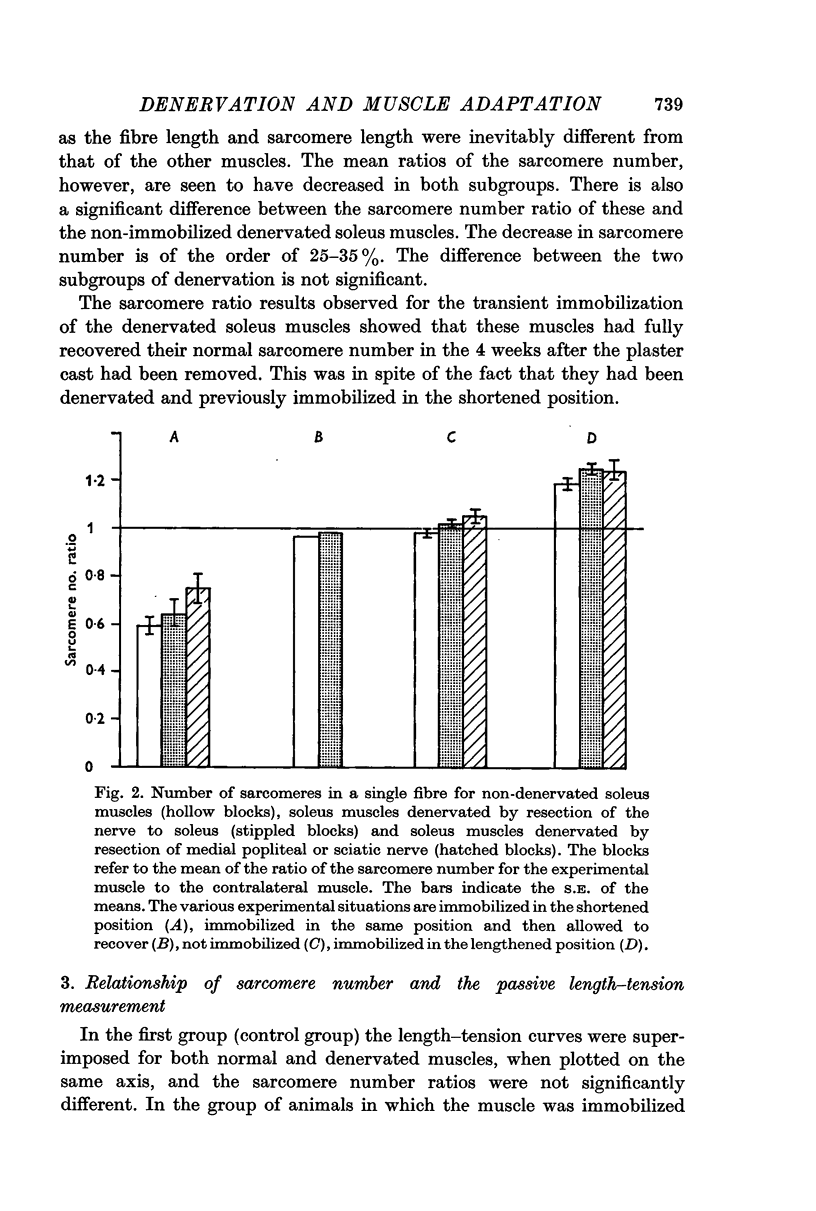
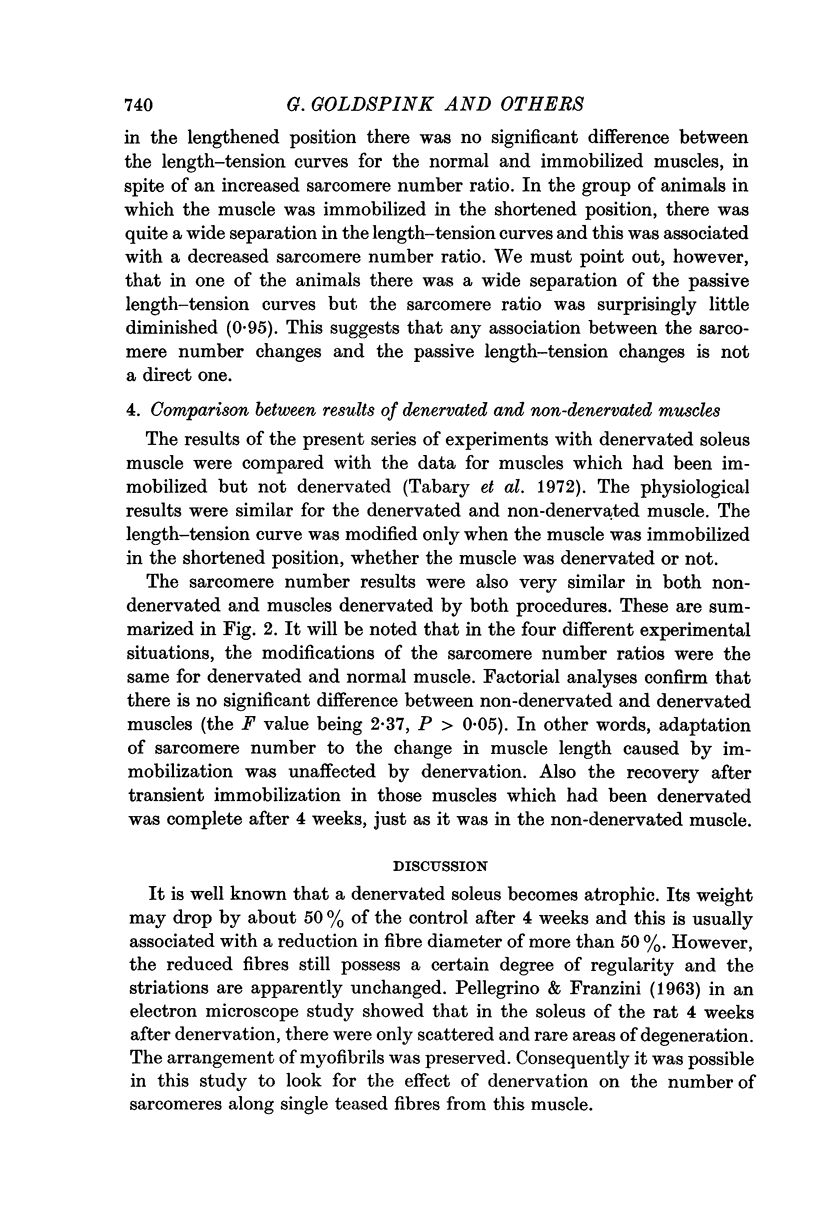
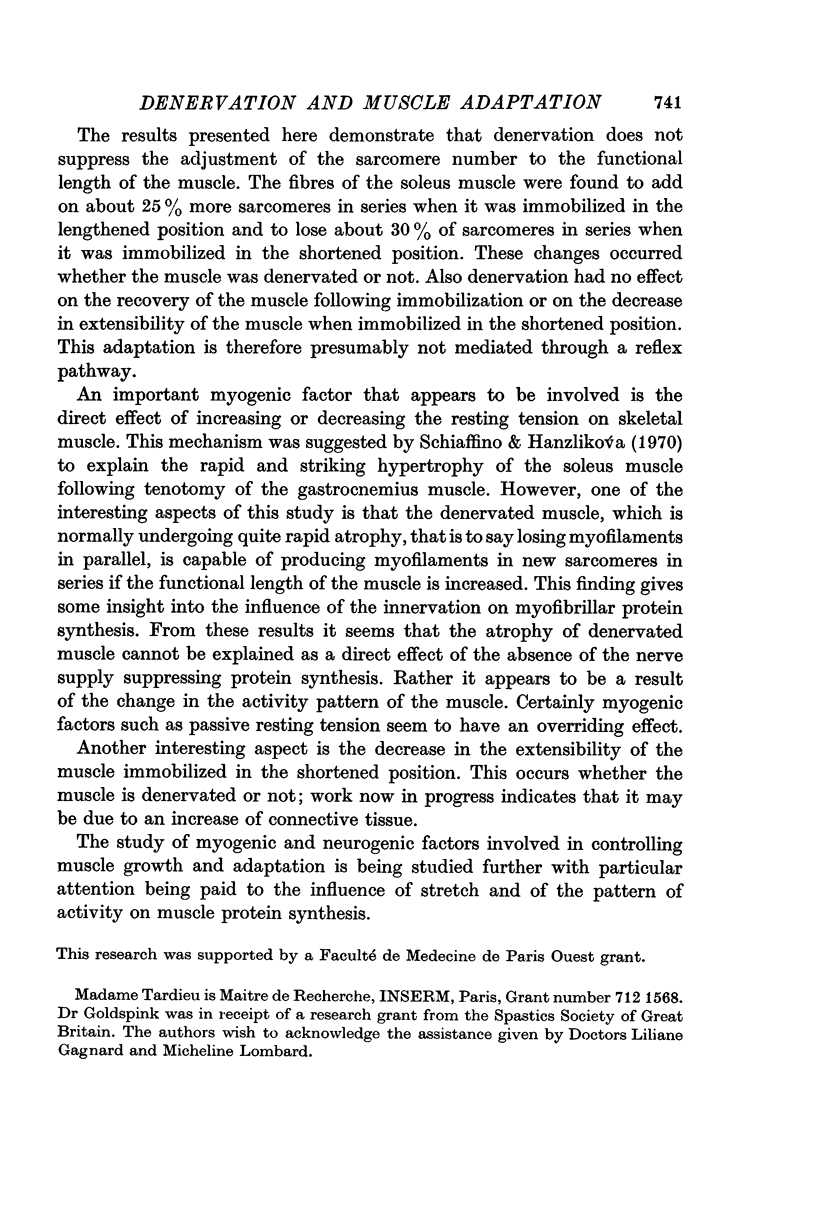
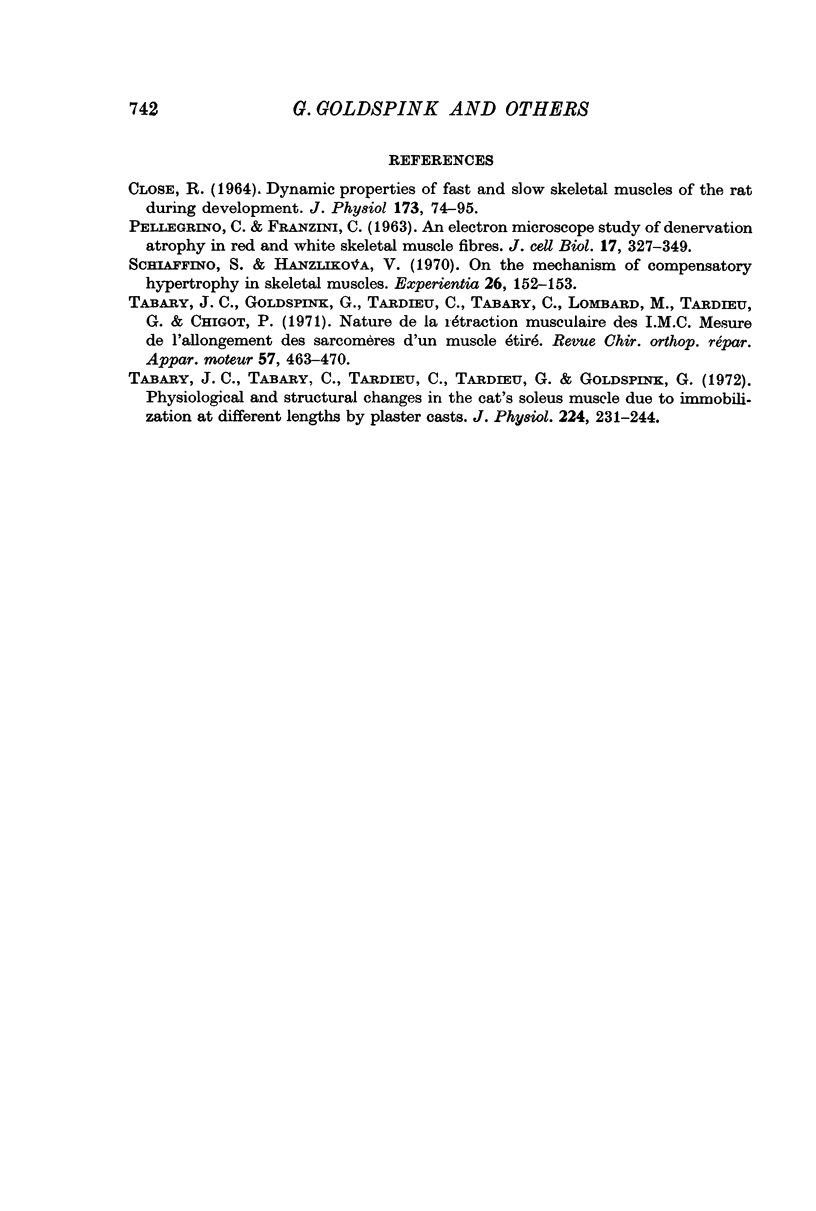
Selected References
These references are in PubMed. This may not be the complete list of references from this article.
- CLOSE R. DYNAMIC PROPERTIES OF FAST AND SLOW SKELETAL MUSCLES OF THE RAT DURING DEVELOPMENT. J Physiol. 1964 Sep;173:74–95. doi: 10.1113/jphysiol.1964.sp007444. [DOI] [PMC free article] [PubMed] [Google Scholar]
- Schiaffino S., Hanzlíková V. On the mechanism of compensatory hypertrophy in skeletal muscles. Experientia. 1970;26(2):152–153. doi: 10.1007/BF01895548. [DOI] [PubMed] [Google Scholar]
- Tabary J. C., Goldspink G., Tardieu C., Lombard M., Tardieu G., Chigot P. Nature de la rétraction musculaire des I.M.C. Mesure de l'allongement des sarcomères du muscle étiré. Rev Chir Orthop Reparatrice Appar Mot. 1971 Sep;57(6):463–470. [PubMed] [Google Scholar]
- Tabary J. C., Tabary C., Tardieu C., Tardieu G., Goldspink G. Physiological and structural changes in the cat's soleus muscle due to immobilization at different lengths by plaster casts. J Physiol. 1972 Jul;224(1):231–244. doi: 10.1113/jphysiol.1972.sp009891. [DOI] [PMC free article] [PubMed] [Google Scholar]


